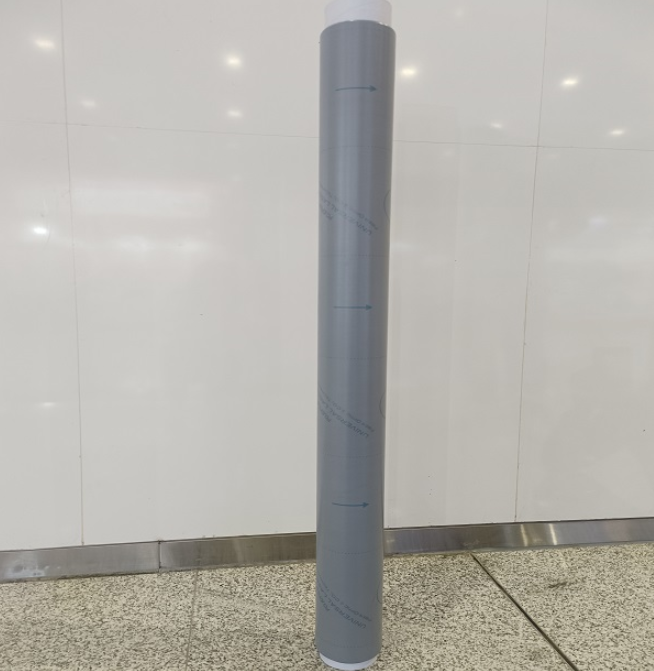Jun. 20, 2025
Protective films are critical in manufacturing, transportation, electronics, and construction industries to safeguard surfaces from scratches, dirt, and damage during processing and shipping. Among the many types available, Laser Protection Film and Standard PE (Polyethylene) Film are two widely used options, each with distinct characteristics.
Choosing the right film can affect product quality, operational efficiency, and cost. This guide compares laser protection film and standard PE film in detail, helping you select the best material for your specific needs.

Laser protection film is a specialized protective layer designed to shield surfaces during laser processing or environments with intense heat and energy exposure. It features:
High temperature resistance
Excellent adhesion without residue
Resistance to laser radiation and sparks
Smooth surface finish compatible with precision parts
These films are often used to protect glass, metals, ceramics, and plastics during laser cutting, engraving, welding, and marking.
Standard PE film is a polyethylene-based protective film widely used for general surface protection. It provides:
Basic scratch and dust protection
Moisture and chemical resistance
Flexibility and ease of application
Cost-effective solution for many industries
Standard PE films are commonly applied on glass, metal sheets, plastics, and painted surfaces during handling, transport, or assembly.
| Feature | Laser Protection Film | Standard PE Film |
|---|---|---|
| Temperature Resistance | High, can withstand laser-induced heat | Moderate, usually up to 60–80°C |
| Adhesive Quality | Designed for clean removal without residue after laser use | Standard adhesive, may leave residue |
| Resistance to Laser Damage | High resistance to laser sparks and heat | Low resistance, may melt or burn |
| Thickness & Durability | Usually thicker and tougher to withstand abrasion | Thinner, more flexible but less durable |
| Surface Finish | Smooth, anti-static and dust-free | May have slight texture or less smooth finish |
| Applications | Laser cutting, welding, engraving, high-heat processes | General surface protection, packaging, transport |
| Cost | Higher cost due to specialized properties | Lower cost, mass-produced |
Laser cutting metal sheets, stainless steel, aluminum
Engraving glass panels and acrylics
Welding protection on automotive or electronics parts
High precision component manufacturing
Protection of surfaces during transportation and storage
Scratch prevention in furniture and appliances
Moisture barrier in packaging
Temporary protection in construction materials
Superior heat and spark resistance prevent film damage and protect surfaces during intense laser processes.
Residue-free removal ensures no cleaning or rework is needed post-processing.
Enhanced durability allows use in abrasive and demanding industrial environments.
Optimized adhesion tailored for clean peeling without harming delicate finishes.
Cost-effective for broad, general-purpose protection needs.
Highly flexible and easy to apply on curved or irregular surfaces.
Good moisture and dust barrier, ideal for shipping and handling.
Widely available in various thicknesses and adhesive strengths.
| Film Type | Limitations |
|---|---|
| Laser Protection Film | Higher cost, not necessary for low-heat or static protection tasks |
| Standard PE Film | Poor performance in high-heat or laser environments; adhesive residue risk |
Assess Your Process Environment: If your operations involve laser cutting, welding, or exposure to high heat, laser protection film is the best choice.
Consider Surface Sensitivity: For delicate, high-value surfaces requiring residue-free removal, laser protection film minimizes post-process cleaning.
Budget Constraints: For routine protection against scratches and dirt during transport or storage, standard PE film is economical and effective.
Film Thickness and Strength Needs: Thicker, more durable films like laser protection types last longer under mechanical stress, reducing replacement frequency.
Adhesion and Removal Requirements: Laser protection films are engineered for clean removal even after heat exposure, while standard PE films may leave adhesive traces.
Many laser protection films are now produced with eco-friendly, solvent-free adhesives.
PE films are recyclable but may require separation from other waste streams.
Proper disposal and recycling protocols should be followed to minimize environmental impact.
Both laser protection film and standard PE film serve important roles in surface protection. Your choice depends heavily on your production process, environmental conditions, and budget.
Use laser protection film for high-heat, laser-intensive manufacturing to ensure surface integrity and reduce cleaning labor.
Choose standard PE film for general protection, transport, and low-heat applications.
For expert advice and high-quality protective films tailored to your industrial requirements, trust NB Technology—delivering innovative surface protection solutions worldwide.
Navigation
+86 158 1691 5404
+86 757 8271 3937
+86 757 8271 3937
No. 10 Industry Huacongsiyue Village, Shishan Town, Nanhai District, Foshan, Guangdong Province, China